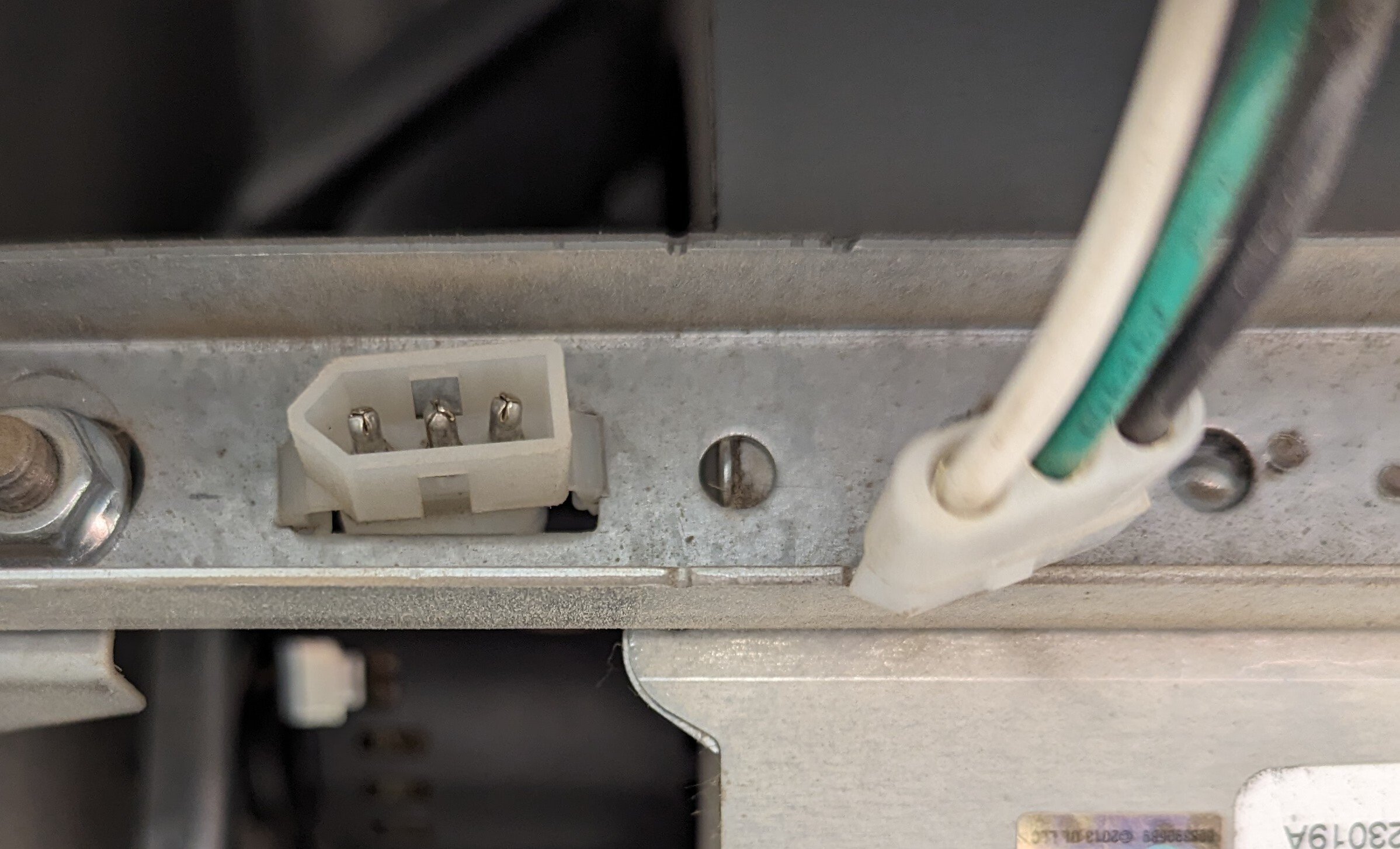I'm looking to install some cutoff switch on this 3-pin connector. It almost looks like a PC 4-pin 12v connector, but it actually connects to a Broan CRV motor. Specific model is the L150L.
I originally wanted a ventilator with a timer, but they installed an inline CRV (intake only) with a crazy 150CFM for a tiny 480sqft suite. Massively overkill, and loud. I'd prefer to put this on a timer, or even better would be a smart switch control. But at the very least a manual switch would be great.
For now, and for the last two years, I just have this unplugged, as shown in the image. The passive ventilation on the connected ducting has been more than enough to turn the air around. But sometimes it'd prefer to enable the intake for a time. I just can't have it on all the time because the air turnaround is nutty, not to mention the blast of cold air in the middle of winter.
Any ideas for a switch that fits this connector, or a DIY switch, and/or something to hook to a timer, OR smart switch somehow?

I’m not a pro either, but I agree.
OP, is that just a 110V AC input line? It looks like it. If so, I think you could splice in just about any 110V AC switch before the connector, then just leave it connected to the device.
Most AC switches will be made for mounted wall use in the usual wall box (like what you use to turn on lights/outlets), but you can find a box that surrounds the whole switch (usually made for outdoor use). Or you can find inline feed-through switches, like this one: https://a.co/d/5X0WZol
Or you could even wire in a Bluetooth smart switch if you want to get fancy. Quick search led me to this: https://a.co/d/jkZ9pvo
Make sure the switch can handle the amps pulled. But other than that, it should be pretty simple to add a switch before the connector if that’s a 110V AC line coming in. Not much different than any other switch, just perhaps that it’s not wall mounted.
https://www.broan-nutone.com/getmedia/fd840029-f968-4f1a-877a-04ebe8ac0702/Specs-Sheet-L100L-L150L-en_CA.pdf?ext=.pdf
This datasheet suggests 1.3 amps at 120V 60hz
for <100W power so pretty much any 2A+ mains rated switch should be okay,
the 6A one linked above should be fine.
You could get a mans rated relay with a low voltage control switch for now,
Then add an arduino or something if you feel like a bit more control, and a bit more diy and don't want to go down the mobile phone/ bluetooth/ techpocalypse road.
https://mechatrofice.com/arduino/relay-module-interface
also non pro - but maybe that's all you get on a diy forum.
a commercial controller like this: quite expensive, and way over-rated i think.
https://www.united-automation.com/product/vac2-15e/
cheap ebay equivalent - not sure i'd trust such a thing in my house if used long-term.
https://www.ebay.co.uk/itm/304808637300?hash=item46f802b374:g:hawAAOSw8C5j7zEg
sorry for UK / 240v links - similar stuff for North America/ 120V - will be available and probably cheaper i'd guess.
they'd be pretty simple to wire in following the data sheets.
as others have said, you can snip the connector - leaving plenty of wire each side of the snip - and splice in longer wires to reach the controller, maybe use wago lever connectors for easy modifications later if needed.
I was curious about the amperage as well. I mean, I didn't think they'd be allowed to keep it at 120v at the 3-pin connector, so was thinking they stepped it down somewhere.
So, obviously I've no idea what I'm talking about, but if it is drawing 1.3A from 120V, is it possible it's converted to 13A at 12V prior to this connector to the motor?
If so, I wasn't sure if a regular wall switch would work. But pretty great if a smart switch like Caseta would, since I already have some in the home.
Edit: Looking at the motor itself, as a replacement part, the sticker does say 120v. So I guess the dinky plastic connector is fine due to the low amperage.
i think they don't want to run high current through motors, as that means thick wires, and a much bigger armature and overall motor.
its the current that generates the heat and needs beefy connectors and wires.
There's plenty of mass produced mains rated motors, like most domestic floor / desk / ceiling fans vaccuum cleaners and so on.